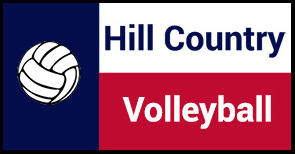At Hill Country Volleyball, our mission is to provide the highest quality volleyball training possible, teaching players to play the game the right way, from the beginning.
Having coached volleyball for over 25 years, from players as young as six up to the highest level of Division 1, I have had the opportunity to train, coach against, and observe some of the greatest minds our sport has to offer. As a Hall of Fame coach, I am excited to bring that experience and knowledge to the youth of the area.
I will personally oversee the development of each and every player, as well as every team, in our program. Alongside each coach, I will meticulously plan all training sessions. Each practice will begin with the teaching/training of the fundamentals of volleyball, followed by progression to small group training, finishing with wash drills and games, the way the game is supposed to be played: 6 on 6. All under the watchful eye of experienced coaches.
The main issue in the proper development of any player is transfer. Does the skill and/or drill transfer to the game itself? Introducing artificial conditions inhibits a players ability to develop and improve. Anything less than 6 on 6 limits transfer. In other words, a player doesn’t maximize potential unless she is able spend a portion of every practice playing 6 on 6, learning how to read the game and interact with her teammates.
As such, teams ideally consist of 12 players, with a minimum of: Two Setters, Three Middle Hitters, Five Pin (OH/Opp) Hitters and Two DS/Liberos.
A quick study of recent USA Volleyball GJNC results reveals that the average team that Medals carries 12 players. NCAA Champions carry a minimum of 12 and, in most cases, many more. FIVB, the International governing body of volleyball, calls for an Olympic roster of 12. The reason is simple. You don’t maximize your potential as a volleyball player unless you practice the game the way it is played, 6 on 6. If the best teams do it, why would we want to take an inferior approach?
From a competitive standpoint, carrying any less is a very risky proposition, as well. Over the years, I’ve coached teams with as few as nine players. In addition to practices becoming a series of long drills, at some point in the season, we’ve run into serious competitive problems because of lack of depth. A player gets hurt, has a basketball conflict, a family obligation, etc. The reasons are many. The team is then placed at a real disadvantage because our “only” Setter, or one of our two Middles, or (fill in the blank), was unable to participate. If our goal is to compete each and every tournament, having too few players will put that in jeopardy.
Every coach in our club will be on the same page, teaching and training the same techniques, fundamentals, systems and philosophy This is critical in the development of young players. Seeing and hearing multiple forms of feedback, from multiple sources, is confusing and impedes a players progress. Players in our gym will receive consistent feedback from multiple coaches, all with the same goal in mind…helping them improve.
At Hill Country Volleyball, our passion is GOOD VOLLEYBALL. We will purposely limit the number of teams in our club, in order to remain relatively small, allowing us to invest more time in each and every player in our program, as well as ensure the quality of coaching club wide.
We are also excited to announce a partnership with College Promoters USA. As a bonus, every player in our club will have to ability to create a recruiting profile with CPUSA. You can find out more at: http://www.collegepromotersusa.com/.
I encourage you to check out our club for your daughter. If you have any questions, please don’t hesitate to contact me at info@hillcountryvolleyball.com
Pat Stangle, Director
Hill Country Volleyball
Volleyball Pure and Simple

